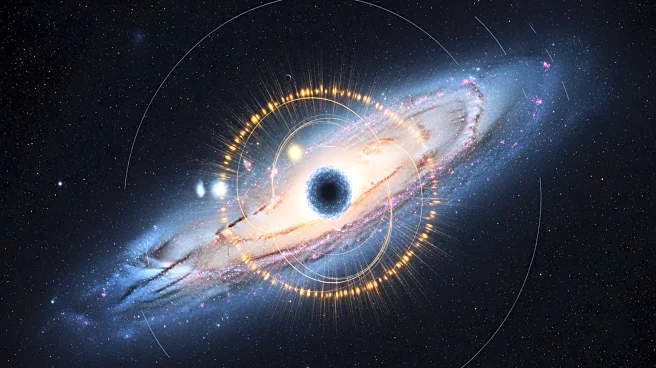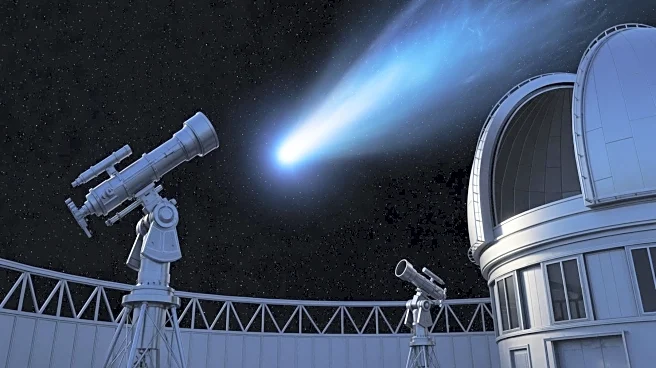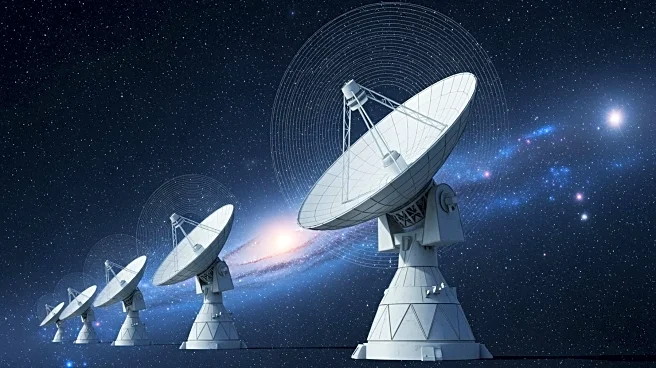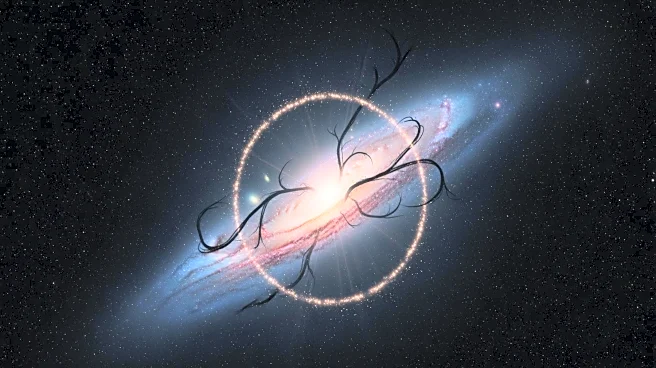What's Happening?
This week, a trio of comets, including Lemmon and SWAN, have brightened Earth's skies, offering stunning views for skywatchers. Comet 3I/ATLAS is approaching the sun, sparking speculation about its nature. Meanwhile, a mysterious glow at the center of the Milky
Way galaxy has been linked to dark matter through new simulations, potentially solving a major cosmic mystery. These findings could lead to the first detection of dark matter, which is believed to make up 85% of the universe's matter.
Why It's Important?
The visibility of comets Lemmon and SWAN provides a rare opportunity for astronomers and enthusiasts to observe celestial phenomena. The potential link between the Milky Way's glow and dark matter is significant as it could unravel one of the universe's biggest mysteries, offering insights into the composition and behavior of dark matter. This discovery could have profound implications for astrophysics and our understanding of the universe's structure.
What's Next?
Further observations and studies of the comets will continue, with astronomers aiming to gather more data on their trajectories and compositions. The research on the Milky Way's glow will likely lead to more advanced simulations and experiments to confirm the presence of dark matter. These developments could pave the way for new technologies and methodologies in space exploration and cosmology.
Beyond the Headlines
The exploration of dark matter and its implications could lead to ethical and philosophical discussions about the nature of the universe and humanity's place within it. The potential discovery of dark matter may challenge existing scientific paradigms and inspire new theories about the universe's origins and future.













